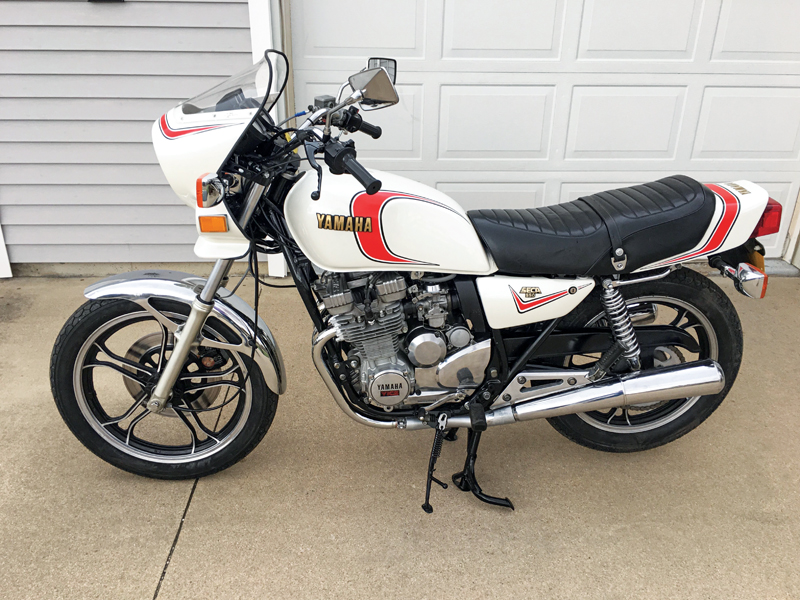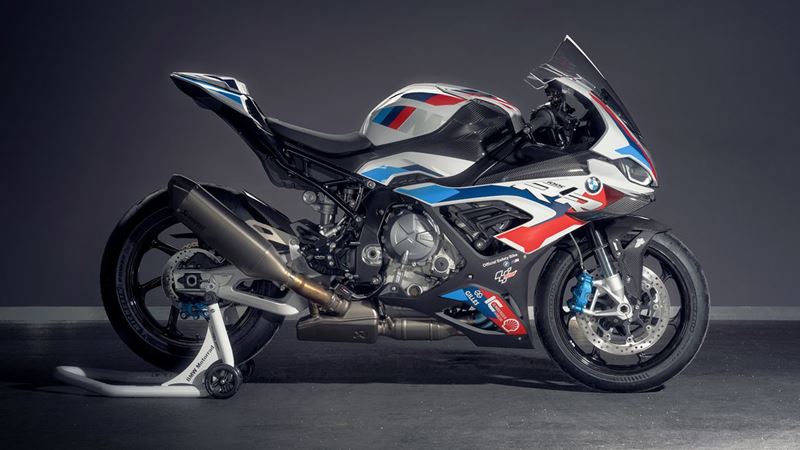Two things a motorcycle manufacturer has to look out for when introducing a new model: the competition and the economy. Yamaha got the competition right when it introduced the XJ550 Seca in 1981, as mid-size bikes had not been very popular during the horsepower wars of the late 1970s. Honda had recently upsized its rather boring CB550 to the CB650, while Suzuki’s GS550E had been around for quite a while. Newish but not dazzling was Kawasaki’s KZ550, which was soon slightly hotted up, with problems, for the GPZ550 version.
While this new Yamaha was the cat’s pajamas…to use a 100-year-old phrase that means it is doing what it is supposed to do extremely well. The engine had been around a while, with all problems sorted out, an in-line four with two shim-adjusted valves per cylinder and two chain-driven overhead camshafts. One tricky bit was this new YCIS — or Yamaha Induction Control System — a rather complicated addition to the cylinder heads that was intended to improve combustion and also mileage. The main fuel intake would move along calmly and rapidly between carburetor and combustion chamber, until it met the YICS just above the valve. These sub-intake ports were all connected and would send fuel remaining in the other intakes into the carb’s cloud of fuel at a very fast rate, improving the firing chamber swirl. The better-burning also meant better mileage, and Yamaha was getting more than 50 mpg with the 550.
But we’re ahead of ourselves. Gas came down from the 4.2-gallon tank, mixed with air in the four 28mm Mikuni carbs, got sucked into the cylinders, compressed 9.5 times, with the magnetically triggered transistorized ignition, meaning no points, producing a spark at the appropriate micro-moment. Rapid burn! Exhaust gases pushed out to a header pipe, with the four headers running into two mufflers. Measuring the power we find this slightly oversquare 528cc engine created 50-plus ponies at 10,000 rpm, and a respectable 30 lb-ft of torque at a more modest 7,500 rpm. And if you had a really skillful rider at the bars, that bike could do the quarter-mile in just, very just, under 13 seconds and exceed 100 mph. Not quite what the average rider was capable of, but nice for boasting.
So how did the power get from the crankshaft to the rear wheel? A Hy-Vo chain from the middle of the crank ran to the jackshaft, with hydraulic tensioning keeping the chain in the best of condition. The clutch was wet, running to a conventional six-speed transmission, and on to a No. 530 chain going to the five-spoke (10 spoke if you’re fussy in your counting) cast wheel, protected by a 100/90 18-inch tire. Rear brake was a rod-operated seven-inch drum. A pair of preload-adjustable shocks offered a little bit less than four inches of travel, and were often changed for superior aftermarket units.
This was one narrow engine, with the alternator having been placed on top of the tranny rather than off to the side, as skinny is very useful for cornering. The engine was rubber mounted in order to keep the minimal vibes away. The steel tube frame was the full cradle variety, with a pair of downtubes coming from the steering head. Here, the non-adjustable front fork was also attached angling at 27 degrees, trailing 4.3 inches, and having 5.3 inches of travel. The 90/90 19-inch tire was well suited for handling just about any type of pavement. A single 11.7-inch disc with a single-piston caliper slowed things down, with a second disc being available and advised if the rider liked to go to a racetrack and do laps, which was becoming popular in the early 1980s.
Seat was long and flat, with the height at 31.5 inches, but was not praised by all. Bars were raised enough to be comfortable on an all-day ride, and the little headlight fairing and windshield kept the wind off. But not the rain. Sidestand and centerstand were both bolted on, making chain adjustment easy. Paper air filter was easily changed, and the battery quite accessible.
The dash was useful, with conventional speedo and tach, a couple of gauges to measure fuel and voltage, and standard idiot lights. The fuel gauge could be overly cautious in its indicating of how much fuel remained, but the bike was definitely good for 200 miles. Of note was the oil light indicating low level, rather than low pressure, which Yamaha felt was more important when preserving the engine was the concern. Light goes on, add oil.
The main complaint was the lack of adjustability in the suspension, both front and back. However, the bike was built down to a price, which was a little more than $2,500 in 1981. Plus, tax. Which brings us to what was mentioned in that first sentence, the economy. The Reagan-era recession resulted in a lot of unemployed, and citizens were focusing on essentials, like food and toilet paper, rather than expensive playthings. The recession caused the whole U.S. motorcycle business to take a hit, and companies contracted. In 1981 the Yamaha brochures showed 17 499cc and larger road bikes on the market; three years later, 1984, the number was down to seven.
Also, the other Japanese companies were improving their mid-range motorcycles, with a greatly improved 1983 Kawasaki GPZ550. And Honda’s new 550 Nighthawk looked good. Competition and recession? The last 550 Seca was the ’83 model, with a few unsold ones still on the market in 1984.
The 550 Seca was a very good motorcycle…in 1981. Two years later new bikes from the other OEMs made it look a bit on the old side. That’s the way a competitive economy works.
Retrospective: 1981-1983 Yamaha XJ550 Seca Photo Gallery:
[ad_2]
Source link




